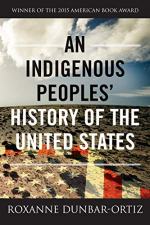
|
| Name: _________________________ | Period: ___________________ |
This test consists of 5 multiple choice questions, 5 short answer questions, and 10 short essay questions.
Multiple Choice Questions
1. What year were Israel and South Africa founded?
(a) 1950.
(b) 1954.
(c) 1942.
(d) 1948.
2. How did Europeans view the newly "discovered" Americas?
(a) As a confining spare or prison.
(b) As a virgin land or wilderness.
(c) As a complex civilization.
(d) As a barren wasteland.
3. When was Massachusetts Bay Colony founded?
(a) 1626.
(b) 1630.
(c) 1628.
(d) 1632.
4. Who were the Conversos?
(a) Muslims who had converted to Judaism.
(b) Christians who had converted to Judaism.
(c) Jewish people who had converted to Christianity.
(d) Muslims who had converted to Christianity.
5. What became of the descendants of European peasants who were exploited and thrown off their land?
(a) Many became settler-colonists in the Americas.
(b) Many chose to move to Asian and African regions.
(c) Many chose to open their own business.
(d) Many became European aristocracy.
Short Answer Questions
1. Which stone did the Aztecs consider especially precious?
2. According to Dunbar Ortiz, white supremacy became an integral part of which religion's ideology?
3. In U.S. settler colonialism, what was the primary commodity?
4. What Native nation was predominant in the territory of Georgia during the early 1700s?
5. According to Dunbar-Ortiz, how many U.S. presidents were of Ulster-Scots lineage?
Short Essay Questions
1. In Chapter 2, Dunbar-Ortiz speaks of "domestic crusades" that took place in Europe during the Crusades in the Arab world. What was the purpose of these domestic crusades?
2. What were three branches of government practiced within the Seminole and Muskogee nations?
3. Native populations were often shocked by the European form of warfare. What aspects of the European style of warfare horrified Native communities?
4. During the Colonial era, many colonialist nations claimed that Native Americans were not "using" their land. What counterargument does Dunbar-Ortiz offer?
5. Some Native communities quickly accept tributary status under the new colonial regime. Why does Dunbar-Ortiz believe these communities chose to comply?
6. According to Dunbar-Ortiz, the English popularized a theory that only they were made in God's image. What origins did they ascribe to other races?
7. By the 1700s, many farmers had turned to slavery. What economic explanation does Dunbar-Ortiz offer for the rise of slavery?
8. Why did settlers try to recruit Native people as rangers?
9. According to Dunbar-Ortiz, white supremacy helped the landed class win greater support from white peasants. What was the relationship between white supremacy and class status?
10. What was the Latin term for the papal law describing the "cleanliness of blood," or racial purity?
|
This section contains 600 words (approx. 2 pages at 300 words per page) |

|




